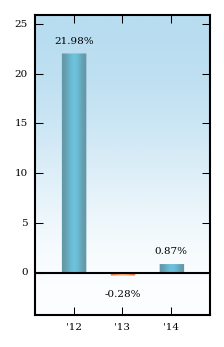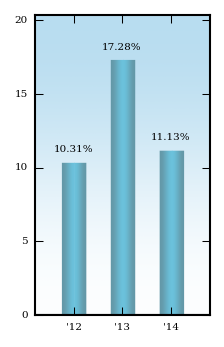O)[C:6\8 6:FMSV9%1U%3H6TIKQ%"J
M]6MY6M#*Q['$;DO!S1=#>M=TZ.,U"LU.RR+:].'63R!3@>4M#*)D6F LM[P6
M@%O;*@R 9%;H@\/G33E8PV,F=U)D<)*6V+4([38)@H@/LZJW8N-WJ'<,MA))
M7DCW56I662-4TYN2Y*FOJS*?NF:M 1+;7 UQ>G6L#&83/5UEY6XLTO?TSP'E
M1\NNF>;!H8-BX&(1R5 O[?/FEI9UC-DI)Z&!F6NH5-EZI+J00] M]=UH$L,
MZ@2COF9Y([0BX.]$X++8.?%:^*O9V*"-I"00:>L"&ZUCHP_'"WJ/JW29\Q&@
M0E9>4R"RM_Z] &WQ2G$ZD^T@X+Q<" );!68Z;^_=B$VBM6/T;[[7=/7*3?"B
MD*S.J-V"CHOH7]PBNH5IVSK,@D&6+-)BOBI-LSEE$-HYF7HWB'H/&X)F5DU-
MKEH7AC" .?J1=)6Q,IQ9XT9B?>E[RG<*9V+C>NK/9 N>4UE@41VXQCYW)?7C
ML/X]?/U#]2^-ZU'6F,J+]D9J5VW9+=J%R5#N%:/MM86YR9#JP=S];V1(\KY$DR<-$ 1OY+1^*BGJ[0M"3JPYR+>
M)#H.&R#@F3<#%;J,4+-@HBIFK]( G.X3MC]W8CJ0:E[*4]?K0,R+;2G^%EVL
M>:EO']@)[893$PM^XP[YDEU=\6."YGJ%L*(K,B,*E+?]31]&TI(A"J'XVL//
M7QP&K-XCO/0UKDG7C=#J+-,>W)L/79CI8"4Y$U]BC GAYZBCGLLL%)^=:;.G
MRC@\O'"FJB#O2FK.Y7Y:,R2Z)F6>OG5M/K0#]M:KN!+?[N!J\#XWZ'_/:NQ7
M(N]1EW"G)S"1M^L/H=W=D7$ILI'Q-D":QB<]4D./&:P,S@B;"HO[.C_MR.U#
MQ2WNXL+/5L8IYDK\XX^,CYY\^>@&/#S[*3E_D5R].KD\25X<'EV=7UR"+?3F
M_.PEE^J'?V%Q_]@4;V].'ES^NY-
M'IV_.[O"7YT=_K#Y1/+9[E$(N/-]J'H[5$E8F('60[AJ!F /?:ML
MDF T#1>*(.Y9=?WN*GM,%_O&6ET1'^E87J;_(!H.&S?DC.8*9'144(F1323;
M[Z->>?9A)DB)A[8?)4=$N,QTT-E&7.FRHBE/A6#'$5=TWL$J5HQ#0YRC,-(O
M@+3>TKH.O)ML0EN=BV)C6UII260N?:X>R[ _H4W)87F'P,2_KRJI<3#-7-)S
MWZ\$X]&[!!K$-U60/=&-XYNZHQF<9@G:-4+S0\'$6N2K!4EA#4,%SIZXMU1P
M%-I5W1CTMA$OEMHDFT;/99>V?"98OW5--C93IKJHUW@P3KNF1A@#<7YN]:Y$
M#@X5:MU6YP$TF5<>.P\(8(2&ODF @MUV#7>!92
M@L0ZLTQB4*QQT3R] \G--&Q<$2\@:GO1]ROU,)N 9J?6:92DYWH>:' 5X[,5
M@N9XJA_DZFGP3?N7$<+;2+SG:F8+0,?^U$[#O+DR
M/R$]*Y76K<0#4K/?72\5@5Y1Z=)8/F+55PLL%8\VW4A%L;K\@[Z&_ SZL-C^
M^P3O)G&3K"9'@^V-0N#%7?EX1,Z9;,;H$2"AOZ]0[90I91W?#J9@B*-5O3I1
MCW;&M6+>2J69'HPVB/<0Y0HC;L6_RR^C5\]X8-N] V^A8N)GE7028Y]T1A$H
M1U1\0*5I$^W6Q0R_B=/:5^J0L;>P']]R I)-'A]4)G-I@1:GC>C&
M^29I+:;],!M,WV>]J3\K3M M'8C;NC=-!T6R5$P&],8+\I9;H?[<'[J/NL=O
M"*(L92P$),/FBP?P>N52-J?D^9J[!\FOJX@&9#..=_F8]CAYZX;UST3<&@-2
MZ&_9]?P]FXTW+#VYR(J<[=+2*5H8#2B1>P^?JX=O^)VY#1$34N\A-N6IFI)R
M6))N[[,[<@^67 .[E(RI5GR.Y!_5'VSG&OG$QO47@KE?_S#^IVSV-SSE-%L>!PE/?[C;A2;IMKJ-845P'4D?+U&/6EC_0;0(;;2V]YY9"&,
MI!O!-9S/K;)#:O$DK>&L4"DB?[,ZB6@?&5OLHS-BG.A\D1D[;+#*@L8Z07$.!JSO!U.:U'E?)V9@DR0MB>\RVO8>E+5'$L9
M(I%=J+Y0_!#)>W_*:L'T*5*#-<@HIXCWRFQ@[Y6.
M;D=WHI]'7UQHHTM@P==A:QC-.+?1_8YCO4-4/9343Y\RH]"?DF\[J7X/%'NS
MVK9PM4]-R0"+\R>"KIIAR]WK8A*[0VYK2Z,%+AP/F71A*09D(<.X88*ZSAN%
M7;MBJK,[1 8228?; WY8=?%6REPBLLAG (\KV1N(UG\[6H(X/F
M7YC^85^YXB"8+^R#*!E]SE'W<1S)(QW5S$2.,RX8] Y63/J7!/T
M#+F0IX3(4'Y&.HPF%W!78I[?UXU_JX^!6Q&2:P%4AVL6&NU+QLMKZ_<((;V?
M= D)OD(0K;[+MXT7ZA_C5-@P[RM$\N!F$VRG.W?]FDX3?1,X;6I!=IT)***7
M@5G@A(2?UI9."=_C<3S*3."7W&R<+X$-L46!@VY?;2U=VC]1)[WX]"M*-]M4
M'D(=!'9.)O^X;ZJ^VWK4Z!6]X<).&0BO3E).? UI,FBM;AJXRP ,2YJ[//MN
MSN#9X0^<1!K7L>W='0/9!U-#*U$@,QL%B\2-PG),KJ0BF"(UPF3HW+08(+GN
MV8ZG&OD)98(D3A'UB-8A.)WPOE*JV%-F*U:I0(?+Y.K5X16"'8[^DIR>'9\>G5PF/YY>O4HN3U^>
MG;XX/3H\NTI^/#E]^>H*ON_VRSF]O'QW%Q\_.3BXOP"WW7&\ M\U\E?L7U)PS,X/D_.SG4BE^^.7NELMN!*H&/=/;H"
M$AE29?J:T'3KCJ"(N5-7QW&U0D:*HQY^J'+&$1YV&F"(R5/.;*T4$X,^OCH,
M^UC,23@5>39G5J>ZIQBH5%09*0'7! ^6V775BK7VT*-K-9S9"N(I-1D)N(()
M_'".^O:T0)+9<:TD"M2CI[E-(Y/W/,,BD*QU\^-LPUJ@2&0X&C!L
M>S.KTUOG! VWVF(@!PI+B].3:YVQOM>OSZP)8OW@&& ?931I(=WD_;P5RT!%
M2P3(Z?AFE!%./3J)K_DE]G%>(WU,KJV7"/@:U6Y)OK VLCT7(V+J/?HVUF
MF-%'D!R+?66$;F;&0CIGYT!]*HY?5[&2I6!.?D[2$\
M,+K(,7;JLLWI&
MGPQ6*FN\A=.[M#"8':_;P3+\;!)72(!A_0SU9OP/5IS-?T;7HJFIZS#Q7'!Z
MP*(TGE:?]*PE;&WUZ\O 6APDPE"U9AX1A7TXT$OQ*8,41Z..7*9Q8E)O_G7J
M.$Z,JC-=? =KO3Q/ZR.@[?:PG)G,)&JW=Z^%Y(UV;G#B_G[05#=/QG5?\%_?
M?U7Y2
M2N$PJNDR;U66[G@$1IGA1=1:N]K[P>X'=[7R%57P"U8>X/:LEDOV#7(DTTT=FH--7,:%^.@L\QAK_4+@2('F;RJ@-SZ'!HZ&F+ITN9A'5W'=_8^+^A/
M1*5W"?WW0B;Z$/_5)"<4+S_5P^0"Y/6!6V_L'XR_?_*5$L4^05]Y##A_>.\!UQ^^K>JFI1_L/AY_
M?^!^< !''O[@\7A(BWRWG''C,$O EC ;$ZZ'^QQU6J70#+JWN[
MVMGQ(?_SR=,GNP=/'S_%OG3 GS!A,-L9!^<2'T /%[UWCG\H34VD!XN]FF%+
M+E7'];2RF-JH /N3F.8V"(C-;:B/X6#.YU?2W"W_LEYDG7YP6_;"[DRBTX:+
M5=DKPBVIZ#POV!WR!=OW2RM?
M\8X,+DHW !6 JPJY%._,ZW22%9^_8NHNO[=WL'_0:>,4Z'M(!+MMM8O"4P0[
M3;UW.AVU"#U 3?O?+**+.WX4?W2O$T=%87?O\>[C_5 '&GR[SO,U=7^)'KC_
MC27UA:8V_,)XZWJ?_$?LW./=O6]W'^\%.S?X_\ZA?DDS6_/"'@YQ
MR(H<<9(?L\EEWF:' L/_ A81:83Q#1Y^Z889OKT!P?$E$]M>&5TW9YK&D#[Z
MKLD:.8,7&88EBXLOHD40YZZ]A1ICPB EO9%L!*I3Y^M&LP>3[$RPK:N:HI\W
M/"V;H$TY2'.>)SIJKO.2+%RJZ4&OY&ID:*175OFAL7U!E*:5&HX55?IQ^-LGM68)_HE^\E)]FEG6QG%3[)=X555'?!X
M?+K)!83F0N:A+YQ2T-%Z&WF)&+Q&3#O?^HR6Q[DA'W>SCY0IHJ^7>*#^X_:F
MXCK5FG8I.3?XRYGN#1KAY;4"&15K\&1O_^'['2FQQ#UUE JP,1L'_A0=&09S
M3B\.PX3"WI,=.JNALP7=&.9"6TDD#C]YQ8&0+SA>4I@U3"9B4 >5\%2.*U$@Q -[-K:<$TTM&.*2=M/N>X
MR)T;*$@BU[A-.-FH[-X]K)Z]RE08-AA-2_/;&-4V;^JGE<&S5V+QA1; (&V\
M\7F?0A,12MA=L?G3@R
M,!+'0ZR 0Q-6:%MNL_^+'^ OLJRGWS[^M.-ZJRBE*VG@^H5.M0T3/&!JZGUK
M['^._?O_"-?S-[M[W\>NY[[W;A=6^ 7%Y?[!]T^V"#5LY=/_1>V/Q]\?;';T
M]RM\/^;MC6]+1.Z.>X&1()A@EG](FO:NR/[T8)8WRR*]>U:"C?P (0;_D]RT
M[?+9HT>1^_U17179H\OI339;D>?%S/4*4QPH11#?=_ $LZ]6"X4"<2F,:9O\
M[^1_",H KW=@ANT7/>0 _!?:E8 1$>Y#HJK1!CW]A T:7*X-^/-K/AO$\IW;
MAYS+-^(LFM62,#WHL:VS:P+W/)(/DY/CER<,NWUS>I;\?GZ_/GA:TQ)
M,!B7JWSZ/JN?)8='/_[0ET7P^U^?\]=EB]2N:)!GR=E/ER?)83U-'3PBH ?G
MX-+2U_= )Z90LH-ZN/$CO%+\WLY\WM8Y0FZ^X"+[B6%072-S)[-KP8:#JI&
MGI&\+*I)6B"1=KJXV4@\I9ILW8/6X;"Y(VI&1:O#E/VX_ ;F2+GFZ'W]R;GL
M1 QXCYM:NY:KDL,UJ:N4.[7VOCSC[A&:R1\>3GP(D52Z3YIYH1E7ZN"*""9\
M9321^P ]A^3"8!V*S4CV9S,%@T.2L+L=A"F"@R@H:7).W0 (^81Y^SW(+^G[
M$'5SIFH%G8PHH=T19NF..T3*I6^#IM%<)@Y+(5W@7E"TY9#'#\-OSU^$J50/
M"80$6L@H ?5D2@V@Y'ZL&>1E.,I.9XJ&(1SJ,EWB5S ! 3C)AB+4F/$[A,TK
M3"F9OM[-(PHO48A3JA7Y]#T*(8T,@L]_)7E<-K;$)\S%/>0I/FZX]Q4V'D8T
MH'X7U0$E#"%.V&S X52*^=-3'5H?VT;;&YX-PN2^$26&TU.I[*#M.SI42G19
M<^9) !*+XX:^[''4T7/+6K_ZQ&KAQ!
ME^'C&?>D[Q('H>1O=^6K)!54KYN!AN 5=^=*S:-Q4G#9CGOJ)4J-X4>Q"#(]
MX?VMP&@R5<%)"9]0"(^A'24$/[96P%)%/"OJZN"KT1,940$L[**#_2^Q1F:A
MK]APA"-D@]1S)FWY>FF"67^FOZ?&)JNEQ);*[JL:FV50A<> (V+-I:*#D?YN
MK!T'=>&\6)=$U0K.F*L\5[1IG4&2"MO(4NW%VSIOL?R39]!RA,*!M3CG6%(D
M-FXZ_D22_;#PQ?H34*0CI:E2:BJ]FY'D BNG(SAW//+$D.K>^&#O*Y<=+G0[
M2Q$W::CW7VXG^S,,?[UP[>$T%G=L>FI'Z6>ZUR+M*J'\@[4$$F0@5.5U%4A8
MI]N@4,-N;HQ*QJP[^T,8%3L_X7;+EKG^'AF@>;"[;"_^4HSH S!TBS2@:2Z'M6RSA:I%J1/%]G8
M9RW32X457Y*AUP].[][,,Z=L+[FB?5Q,19&)AN^/F,V#V 1.K]5!BZ*Q
M2?4/X=R,XB4**TSOKL\WI&B!+&=$MXHL$7IE;W.C;#\@;V&X57%$0+SCJH3I=Q0CT3?8D(5T**.
M8EFG>2J0^P3SRIV'C$M_Q\V:29#@U5/_7+][CJ57IPK$!&BC-*V<><]!+AYQ
MQ;7DQZJ&J]V_S_Z !K>9"CN$G8QV;[G*THP=DR,OE$5/1;#OJLB:7199MJ\?
M+Q9A[%AYDY41U\H<)&>+ :^$7]#$)52$?[ [%#9)N4-!<2_U#F!]$-ZGX7F,
MXEIC_$93]HI?@HPNZ&FL,GA99[OV"U"B0*ZWU%*&BP5,$;!>D7M'&G18.'U.
MPXR3EUK=?#0P55ZA6RYU
M[;9MB\A=W%!-0>K%PE]K8U0IXS<*-H4F+MYB[MQ\ \]J"W&:;QI74W"M3R.X
M=XOE1]2.,R4]/W#!KU/3NM*3S2D1L)[P,28([HZ8<;%*K'3.*1JF_#P3A.GC33I)
MIOXZBD14>(BKQ4@;13?YS_*_6!4>:VZF=<8"F[((
M8&[_M8(3?[Q'GH!O1OVE<:C<(I7DZ.T$[3SR!]^8>HZN,&7S+#E*RW264C,"
M5%2H,CO\!RXD,'_XZ^3Z;MF.X/8B_X=%O,*>T'^IL(\(S*""(\.G3O%.X)4Z
M;>H4J>"_4I@)T%Z*[G!\XBS#>X /-?B/V^3_RU+^R=NL7O'JWL(<\N42Z6"4
M_'?:HMIS";-/E]2Y_+): >O_"_P-XUT"S?_, XZ2JS2_Q=>!X,"\,/R(=XM:
M AW6Z20Y6>329MI\\Q<8?%8M7#ZU?'R)Z5/-N%<*L6+*#(I;XW$+/'*"8'NH
MW62H&]XX<1AZISATQE]2^(A3<_DM>,38(!&SND"91.>[[S%-C01@)]N;*27*
MA"[HZ<;W^5QRZ1%L&X,VP0AU!J*@(4>W5"CQ/6-&47,YK9Y%Y5U(LE,!&T44D]XZ[ TJ:XUT[M[UO\KL0)<__S/C>^
MU[E][K2\S4QU FS]S8?(<%&M20OWHF!:
M+M$HQVWEVFC#^WJJ>T491.C[+#4$@(+8@:'=C.+C?. F1?WKL5:L$]5
M,UCY+HJ22I5A9"*4=2I.P?8F+C_>/]80Q;IW^ 9$HH>3[Q+.L!H7:<*THV;;7$&>WW[9A*3PZA8Z73I4D"O4V7+FB$
MNBC68"=[!/] ,^@#ECEI@^X-WG_-->2U#3*U(N7H)KD,D#6A&.7FF4"LK! !
M%=^2CYFF9Q;;%^;M*A H!EAEP/$G:/%]4%..O.].QGA/RAI"_R2_2X^3@/-B
M>T/Y01A]XVW T\2*,G9' K+@,X8=WZ6NCYT(CO'8L<$N-&"*;@?/4[*Q+^HO
MU5]G.^OGVMD"D 0F7UH\1<8N0QGA6MV;D(>+'^*H40E-9\LU_I:QLB)E^ 4_
M%1I7VS$F+M*S8INM"6J;(;NOW49I-6N[O]MS.8.T$V9_A T 2NWF@6URIG>]
M'2B(E*?NZ8QND&5@PDB(*1]\\Q4QZJIV/E=[^CLL>7W]7"]\J+U,M5J*72JJ
M-:DDJ.^"^0KO+NY\(GOA?8(6I58WH.CFAO#$UFT=]K YK4IC6
M0(9ZB9%@37W?1%(KV*<%#;*C39VT,*Z+7C>&U*G3)!!J_"KKN1*'DK878/5@
M(AT1Z=<+\N VOJ<%;^LX\"$/QX40[GF?/N[+U8("ZC =[^[&E\3N;?-B.Y?[
M=6O_*Q8A"]L2AZVIEV[+V(HHJ;$X")?J=J1MY7SM[KXN&:9YP,@WF<-*N2/6
MSD8!R(JQ3:+!:9G^\)Y;VW$CEZ$\X^2H@%O?;632U_TA5*GZN@BLJQ1,E4Q-
MQ:[0I,&?B7)G_$VNF7? CN+OXU+A4US2%H6L#U>@VM9TM=_2Z'":L(I
M60[BN"WN?/C! U)=0;K4=:'V':!,#T758J=4?;E_B7@K^+PBYDXM/LQ08.8Q
MF4^PN!"U^:V)2_KNX]3_U_6^TT6Z8B%NH>1G%OZ _33--72*05D)$0R<#)J?
M\MJFS9;HI+\%T4V^("I*KIN;+=R1D;NM"0Z5+OC.J%,"11JPM]C'*&_(DXE#
MP]UF[8&[4U/\(7.7_28M6E<<909Z*5F^&PEW/84&ZB'5YVXH.4X63W:QMM^P
MC1^#;FM<248ZWFO7).FKQ#02LK&A/ENFRKA1D&QI[[:7F/HPA.P^],J"7K!0
M(P@U%VIC2*R)&QJJ[YR=W:S)&&\Z.YU',L^1$]&C/KU'G>]$UY[S;,%ZC]1A
M>LD.4^2W;5^CH)NN",TORZ-!UA
MB _+^'#;V/=M]!MI>^&X5_"[Q:(BIP$7=]],M=J7,5[E\ZA="XO$*$ #;R3E
M:X8Z61W6G,:G6:"[%F+,45TK2*(+[(!+8VAGU,&F43,THJC?'ZJ/6)ZI]9HF
MSX!HBMY2,$+)8*FP$:F7:FAZ2Y)+128T3MR.9)/A(];1IBHU)
M$FIK[\KCLXE=JN,:[.SI^X)=.:L2ICO+IQA6NHLJ/$7VVX"N9!M*V)&1XV+!
M^)N1;T DYH\1F-5<#,&-=S1A
M!\7& D^:G5$[9@'_>4__'- M&&4-HGM1$'7=;HC/ZG78OGJ2PMLQV>4CM"!
MQI34*VB\9L$8)P*$N6:LA<*NQ)MLXI@LWF(5(F^;H(/*./G1M8=R*E0 0=#W
M2P-LXH94+\^%8PW@6T\+_4<2G$^E=J9T\?1'75,+1_:^>1Z3E_@G#.4-8O:(
M(5_Q+Y87@3'-S307%)QTJX";*H8J=="ERT'DZ*("#12)0)A=+] BQC4!D9];;='J$G#WXG@#;'1^K5P
M5[.Q0==YR<$"P2TJJ0]&L.&#X[F.Q*@0^:PE.@+4QNQ&;!6O'Z-]\K^3JC9O@/2%!C9ZNTU+'1?@D;A%=PK1M
M742VS:8W)8.U%FDQ7Y6FJ[#R!^VQ01581;.'#4%3HZ;VIB+H]JT%!)%O8%[4)*3\=J/PZKW
M\.T/=0]C?FC;7_$*B>;?(QIZ+XWK%-V9RHCV1]HOJ0G4U6NZB4XDX50MY[$V
M;N@KCY!88PL8',6@%;!.?3=?F:& =\/*%\P$Z!82=]8K:8)HG&BP0!+FGKXS
MQFN11D6"P!6TQV_@+JND!RZ8XQNLA2*\9YR\P4O8AQ$1.'3Z =$F)B90PDFW
M$M9MV8GB=1S0 O/:WV^]R&&O'?[Y@&3BPIU=,:@
M,RE*!6&6UECQ%SGCPS87.3AKHZ&FL[]A@B+.!TBK8O Q+T4DS8R <05G.2HD
MA@B0FN3BI-$7*O'3A>G%WXK;AU,3QL7&'?&GBKN!N0G<
M$L%\Q5;4LN \E_[X>M[VQ$=\ \+G+PX#(>FA/_J:I71GY5"ZI,9)('V+)1$[
M&'2#FN 1@P\(6-6 4=*ZI#9Q=-*'N^AS]_6C/(EB4I
M?>OZ&J,&3/E&VZ[B2CS#@ZM!_W&#WONLQO;,\AYU*%,HRCIRB;S5($ZP=H00
MG4.\,1 #2--XM$=A*7$9G*$7%7:P<:5%1FX?8%CB_5'W1\NE58\0[_HCX^&G
M2 #Z3@_/?DK.7R17KTXN3Y(7AT=7YQ>78$2^.3][R0V1X5_80OGUR>%QG+Y[DYQ?),>GET?G[\ZN\%=GAS]L
M/I%\MGL4(K&.G)R/S^>(#&F,P-U_R5XHK<_%
MNQQ?J>J$5*3?DJR:^?9B[?MN]7 N#H70(-
MXLO^RY[HQO%-W='D0;,$[>'L]=!LD:\6K/V+-AIXR8*WHM?='L4U1=%JZPKQ
M#EDZ7%;[]5QV:4+=4I,NK
M4".D7$71 8E<1IVY<.51K,$DK]YPPE8IT3?)\9@7+L!;RC43WA A+(T<$Z&U
MK!#) @:9\<-6@G-S?3L UUO("HB77?K]0S;\*AG'!@@LU1
MJM="&Q]K:!:CNQ4BXGBJ'S)MX&YM46$XW*,[=/@NTO>,HJBP*0HS-F<+BDN_
MH08LZ"<@ETZ^D. LA6]1:8V!'^(BH!>0PL=\WB IL"/]B6X^4IXA/%RGH=0:
M".80I#?Z6X9^LX7A=JYN#<'LV!_;R9OY5N8GI)TA_"+7OO.I.:6N5Y PE*BJ
M*7X H<\K4)F3#&V9D0IP#;!@='!5:BL[>@9]AFSW?((SF7A05I-C)S/]T0G/
MN"L?C\@9AI!J="L!X?U]AMB,8%\0&? HO5.
M8@2^M(2,O9%_ON5D%IOK/*B YHRZ[>0@Z+:Y+)*T;:DS$?4I>I_UII&L.#6T
M=(A@ZTSVQ,?6C:^JM\6*ZOP#G-//_1")2\JI=-EF&R)62QDKFY$S6/RMURN7
M+#@E/^/' 51(VMR_,Z#!\;)6S>L?R;B\!C]0R_#KI<)V68][2(K<8>BE1(X_?*ZR9 KMZ\[@27%AJ-X4
MIB+P'=<#5&>ZBQ'XC NKS#6WM-(=^E[N7)9$Q]SYD9EP@PP"794DW-3
MKCA2N\-O"M6/K#]RLJKAHC3XZDFK_W*&@%@-M7;)9N/9C*]0FVV !;V$?[$"
M_IYVM>'@ZS(,PDH^ECV'CG>A@%TN@I52-H/NE!%/I$L;,I89A0>3;SNI?C6<
M5?JV+5SQ,9-09Z&29/A6S; B B0&1WB3+^%-5/P /;6V-$F@QWJXC?/-<3@?
M]5VJ6(A!H$;Q>JZ:V>S.G W&S9S^Y>F2[F NQ6;]/4@U$ECY;!W=,.^^%,2I
M?&XR^$7T,G_*I@*RU#V006_#SB9I^D
M38ON$V_4>\_R%./*MU;?.#G26QJS'?5*P# ^\0E^Z U;:"SDUR AUOH:0Q"RF4/!OPSL;?G,7]+0"=P.&+$3
M _Z;5& ?W*HK'/-H4S23S8M176]8JA$D/MH;+IH$%ASKI25#/SG^,(X]PI08
M;&8BYTRV,D<.'9JP#-WO)@5*3!6NE=:=+T5$AH8),QU0!LTD9D.I=/XM>D_%
MC#?3!R9QCJNTYX#M4&'
M)QAO71JW2$NV8=XLR#K#Q Q&?<+GI3.X)))(SH@I1:=4*)#=J4K9UZ: Q->-
M?ZN/IJQ*X9JMGGN3N7NI5E=?SD9>6VTX1-5]"B>[I% >P23Z0;^;;1,'[S;1
M9DX]DMK6&(,E&:=RPVB@'$*NB!\AO-5%M3?,^PJCFE1+#(^K.W?]FDXSR9D+
MS+"JZ'4FX;5>*6!#<.+(7)N=';['QS25G6!==NJRR]? .FLC%Y1F_6A>6./J
MK_5/U*D ?/H5I3ULRD!%%8\,63,GDZ;6-]74T6T$0D!E41@J0U'5=.;\J) F
MD=D8+(1W0O, '**=]Y5&]MCJG5%?,;[>W3&@V57)A)IQ9O H6"1N5+XP)9[2
MZ;3&@"N=FQ8G(G<.8\6HU+=VRJTE/#6*=?2^G"3\O)0*O90RA8GP&#HKLUNN
M!0_;D*HY-<-E_<,33QZ.HNS"38QM*5LD+
M%D" H[DH36O1Z83=3[7FSG;&(""<_I@%ZZKQ (6>B^@08@B0"TN:A6.K7XWC
M0B55XF"/,S[H@F@J-(C2Q-#ARB?24SU%I47 HQ:($=D^Z^+[\<36I=GYF-<,
MTQ%(_;08"L;K",##Y6%I\JO42;;#:]_H3;3BZ;P#+-#ZJKW$B"4A.0%K"%>"
M@7GTQ7::9+BTHJCJEH;OAH!+3:80!%?1C03I%!UY\Y51%;$./>8Q2W%-%F?T
MR6#QB,;KA+W+"1W"\5I=0,3/QB< ,A2184(<>X"(4C80K<:#XK++^6Q
M/<_FRG.LV,EEH86Y%G'MPK!JH;CF,T16.^TC&/(M!MVMLOE0ZG%0*ZS)8M]QS8/Z!*
M@T_&<;NTS1?^/F_W3T3B=PG]5]J^)0_Q7TUR0J$WTR5A9^#21S=WQ]_^^U72E'[A%CA,8!XX+V/
MN9S<;54W+?U@=W_\G?_! =!+](/QD!/BW7+&O28L]5NJ;M1!SI'ZJ#\?!/'W\%'L9 7/##(EL9QR<2WP 0[T([Y.@
MI)F@5NVV]]HV<7BHSAP]K"PF-KX>,ZV!_M=]M0:R302V/RT]9OC[1V*RY_5%EB\F8#:2;#B'
MCZ@42(,-8<_G5]+UY0N;E'0:Q=#L/V,2G?8<;.%<$7@,%WEDNL!\P81_O=UG
MUFY)7(O>E=,/BTC<3X/(W\M6_6;+5O73E2T7]1KVY@U%6O[-JD0YN].M4)<=
MM]Q^G4ZRXO.7[]I2/^XT@PCL![3!=MO_O[UK:VH;R];O\RM4S)GJ,&4,!G*=
MDZZBP234=" 'G.[IIREARZ")+7DD&4(_]&\_>]WV7EO:LLTUW3-YZ.H MK3V
M;>UU_;Y\ ^PIMO50QJ XCT-/OD#D!ZBM0D6LY@Z3?#[_H
M:&VC:.TO7(DA_9%F[D5];5M?'K"N]U01S,_)^5E:)7M<(GD/O5%S%NIV_3A]^&X%NB4 M>V.8^?3+W)'_M,(&4Y>3T
M7GO1W P675L"#T)42@XCNK38K.N@1RE"CS&5M 3D%DBG79)8N@T0[\\QR0E!
MR8LTPV@.]MSC*PDJ" )2N;;B\-D.L*"L&&>,$G<8:6H$,Q;,3]ML&F?@-)DD
M5W%6#?)!_.4@&2?("'LO3PUYT.+&M%+=)X;]!$XH+[S[!SY=IM7%WKS7<"3"T;3@\*B:^,M&\@5KB^7UG"N4'ZXO<[(9I;F':[3AFR.9
M&X@991<"$R%U"+M;O6>?UQD!A1#]91< B0PE!860RV];.3K="SALJZY5V]H:
M(]_(@E.)6]Q\Y3U1B-UC<='ZEIE684_,&S6(8"#3A^9?G:E,'24,T])I@D"M
MVQE4>36'AHM4HW1P+G?LK&Z+J$U[I&%H80_#>$QY/]L0[[D\3=&=\G 4R7/ZF\%YI77O9+*Z=%UQ]YT4_I)Z'^B5@@BK?KNVN
M05J?GFH\CV3M^ZVN^?H."M\FB\AZH,:[EXW.J-FCMWW>^UJRH]BKBF4976%;
M2A3FJTG=(H4(60\"F8%]=9%7DJD>E/RZ6[I=ON6!K">3=P,$[NVL&%^3 1PG
MU5>>XVV4."A'F)(7/,2MWB/)>'1\J*3\='8 SDR MI6$6"#@SM,)^&*W3<"=
M!0(^?SH!>[NM$CYOE["W]702[KQ\U2)A;\LJ4PKZ4W:&?)M'W8JAX]+K\0EO
M%6:!M&?&4TF.,L0.N$^L]_92;[]^W2:U+]3#S;482D:?9/IN+UGF6X\J'9F=
M4R73?[X(C7#K^5,OR^,-\&5P"7=>_6Z6$.PSL,;O/=)7H1OIQT,8(/Y3"-]Z]3IB-V]8.?RA$F65;5,5NOG_P(/MY@ME_> WO5A[_3O
M_<%9U!\'>(KLO-R]K=O_[K?O\XJ. =21_(F^F%O<&:S
MVMXFL5$P@>-\@,VC"DALAMX^/ZH5L]5?W!#H(](3W]SQ>/N2079=4G/]T04W
M&GP 2'GF%>]/$\@&73 86@G[M5'/I1/T6(JV,H.@+?E,$1@;ZU4
M@R!0+<80Z&ZS(,4#(B]( 9#M(.2="S3HPVYC4^[[",>V1/(' (D\A;G Q,8>
M/=_/=/UPN.=][QFV AC+I!,9DV6(1"CO"%!DP4/>^4]9;XBH],&>#'-/AND)
MP&T&/*%0P4XU^5C/-Q'4)FBK"S!M=C"3@]E$!J9W7728K>FHJC_W)X:"UVD<
M6F%L*I1/T7*;@Y(#3214$,K?:L!N6'<( JL)6%(MV]7TRLLJ:W5&FDN=8-H@
M=1US]:Q V3>V*6[,@JK!O%Z->H[.Z9RNAR<+.4"J,IM.J15(+X0*S/P%
M(- GC:KV%\@4%M=QI#1G.VQ&)X1ULP!(FE=%VE500>XU>@\
M*'Z?0*VU]63^<2N9V_MX3D2#RR[>C^\0LFFQ(KCO O>,?9$]+[H#(\\N5?Q@_-' _88(M73*
MY>74E:C6GUG5_Z>WU3%BZPIC>Q$@V(+T[D@GX4BT24:=UVBN\*Z02AOF.'U,3"@Y\73+O=B(.T.=_D0XPM6-1BKBE(S%@0!7)-!8M=5R^M;Q7LP)\2BF,+:*"QI EIN!Y2)-28@MB#@M!02CQGI$Q\
M_)"VNWSQ?:F(H$4Q/6,'BR1N@K4<\LYD$Q?:R[ES8XDM:U:]R:>M.CB:7,7A
M]UI5@U6$R&/07#K>1DZE,0&F);WT,=MJK"+6/@]KAX;ZDL::!]5:EK-_CP"558KAH[KE1@Y:FLU$"&(9D
M\)1(!!HE#4I#W,/AB0D/_F.,#FICX"I&B$="AP?'-L0[.*$0?M;5KH^']'M6)IVBCTPW%1N#%9Y_YM?C,B)ZO-E)(I/#
MP4=&[/(R&@.A.\$8\'9U@JL"]P6R*QMKF@#QF)6>S.R-/-N@Q2,$8.C-X\5$
M&7DLB$S�TLD#TV(8GX.FT).@SA)UO@Y4KYV5%1X1 %J_\
M^TN38//+&)N'#DQ47><;Z$=P:A)[.OA+$DQQ),JXM93S8-&T\6EX>1;)%:*T
ME2D1Q/6V ::SNC132PV@$31>X:^B27RQ_C?'J\+:I77[!6:+=(N]>62R*H=!
M5,NM:&9!-BPM_P^'3VP@L'6XK8=_#^\W!WRRLX5!HN>=<#9_^22?GJ?F7_V+FUG5B=[/
MLXL8X,S1T,?_F:4HX9\?8@C]X[^2+^DP)WD_FN>ELQG0<7:@&SR&4-'_Q4;7
M=!@QN!.=Y7/@Q1A#"Y;\]'>S?.:'09Q>QYGY_R7TN\%WC#!3\/,7[EEJX)=Z*@CF\R5F*:]7L>IP9]6@OY=!;*[JS@:>0&[ L[N[
MN>NMLP*IJ#D&W;7!-2.^C9I%B)E>M('@"$-D!J>+2"B9%3,8G0G39'[*8!6)
MYCF4H%!39K&N^&U*U/,DKFK>+J>DTXK64OH>^1%$FY), 6N\N FR?J#C74/!
M1JCDV0RN$-AK!*'8%N$^DIG"-BRPWC))7\!^'08Y2LOYN;GCA"C(:!A![ KJ
M5."[4>B;2 &#S 9U[#)+I"=I"!=MF.6Y(E5G0PX8G:S\]L:1]26,0^?9GR<5
M-(VY]DA]*QOOXW.2S)!VH!EH@'LP945FI"5+MT';$L[=+=_-5IN0L5""HT]!
M4QF:D#S"?8HO4RDJM<%.PP_2>PZQY$)/AD6V>.->X#8L8%*CH&*JW\G$U;%C["D=CPI46
M&*TWRSA) !'P]=9?PK>$<^D" "XA(N-4;QY=96/)&^K3[?@Q/ 5%Y+O8)I[?
M7A0&SADEJ'5CQ#0>)NE,VP&I3\'8\JAUV\#-DS:?@42]T(R)84&E$4 GH?B9
MR^MX9K.DX"V#\T712_,/L,:O *>N\AA&7,:&0/J%KQ1O;$HL8Q0&-!-"&(OY)GO#+&)[7K8W
MU=SRKE>S:G>'QK,DV\/Y?X"-"G?:-=(/F&UDSB2L.58JN $:53L_GY@M:%[Q
M(<:IF-LF=Z!VGMRT/=1]7#V>"M1JAI0-^6LE?V:_U"@70-8WHE$)UPRE&CT&BWUJ=GI^,**E(0BBK7)%)
M!Q1>IBI"U\(S@!"U\_WS!X'AGDWAGWH*A@/4$
M3$C*V\=BFS84-\,':XJ\DI55C@A@6.HC[.DQ4DI&16P@,V CRZ[2 QHT3(-N
M>9]'@ %'\\&(YJ-V0[\M! ETEF5>N%BQ!&8P?>TXU'1.VM9W#"X; -&CA,I)
M>'$EP">WO8W>N-M^]6N4$'M!1927^"GGHX)Q4MAI$FQ[/;M-O;<$,?P;7-Q_
M,5Q<>]H>2LX?,N=U-I].6?>Y]-F^U=)=ZLQ;F8=-,6,%#IF=T,X._R#
MKJ(<2W1,A'@"T?[$'/HFIU&("*8U2&0)11:!X&,F0"&!^\XW1L_)$6G2@75\
M;53_>YWY8@A#6H&7(=J;&S>LP*/]$1]O%M-,H:]TZU-S L6(QK9K^?(S@.E.
MQI)2@W'M(T.!V/JN&:ML1QM?KQ&,#?D11-XD#_"I^ZR=:NNV7%6\K32.+4NQ
MH]0#E9A6#.M#1O40F07"0RR;E0.6.\)[5/(EI5U^#F!B:)$5J"4=IS4RQ I)
MH1VD!0>R \T+)N@P'P,>;'4*K5F027JA964@5,*O-<["S*;/()*+)!LRN@S!\<<4J0C*9Q4 MPUA!G2?A^2J-#A\+2HZ+O6#('"X?VE%$(
MQC./\5-,[;K,3\0R(9A!G85=UUZL]SXD[J"".%=X[BK?R$KF*G2S#8^3M+I,
M5+E09MX&?A/PA^<(J0;?+F(D5FJU0;R L8:[5I0T6-X;GB5JIW!D#C&P;<%V
MHKF3*F4W5<*FN'21F=LTO*Q>0#_561D5-2DQW<"[?CP!7C5612HD,;3OL132
M0$ML:W<4VV/CHWR-+B(ISCG7PO'3Y:->I'T]M^>\,42,3TH!5\&4F(""YE&S
M$BK:B%+>EE7RRD6E:C=T&RFG8H=1IK^F9*F"BC)468^8<]V8HQ]JS&9D,%+VGCU>W"[HFXS 92E\NA'X-)U3R[=)!H=0;=/6RO)L Y_!
M&[F]''8$\07D%RZ]^@-ZAP!@L$[Q_C=<60^14CB(H(
M6:A59HRH@NL3]J//L&W)*PNF17(I7,7T9#2X6>IIJ)TE<$+/4B-B34V;E
M@ZO>#Z'"YQ7#GZ[HN&%(T_,X XIH\$8Y@\4AZ+Q833'>@+W62D-Z:!P9S#(
MV4I<@SX$=&_N5:!+HVYTIE7I<90+H5# 'XZ:>S&_J&N$1CYK
M."2S(]R&MLO#(V43PX$3@7?R8"VI2MEVP7[T2ZV]QG>,/KLG
MU"Y<&Z^@X\01+(AK<(95V51FR-,<5!\,POQ!19XU9L#%<0RFN =@XV87&W-6\IAT,
M:F<86.!69C<*%;P3]&.G);CLK4.NY,)GA"??&8]RYLZQXF^4#C$Z>I3)/)>,Z\]$0(*I<$,F)D4O/6CZCZ+]NG!+5477U;5G!%*,'1@94UVB(
M@MPZ#C&U?-Y4L0J-DR N_%^J$5AM4)D$=GI0H6916!>J:J;/J ">BY1!PI3X
M?(EE*Q_HRN$.ARR(IS!05U!XB>[EU46$EX>)!
MJQ"<[,+A 8!)1<]98?(HBM)PIV 7ZWP1B5ZVM+ I:T 7T>7U:PG= 59#W6C?
MWYC:CN M :/S[2.&/N+8CXQ6O11FS04,VHBSC6@<#%@^10Z^OGEOJSH/43WC
M.?E16#11A8G6.U CVTRI.4+F'P[WO#O2E3;*:VC?)5QYP=WN7'>QRICP%FJ-
M+ZJ$(Y578>%H:?R2RC:J/#UM:!U!MR3F93Y84P
M?P11R;WC7Z*3PVCPOG_6CP@P[\PXDA].CM]%)^:W\-.'O5^B'_M[!]'@!#X8
M'7XZ/OCN+")\OFAPNG< Z'I[ V.,?CSM?SCZ]"$Z.8T.CL[V3SX=#^!;QWL_
MK; DZ6ACWR\VW;>ZM;Y ^ZHYAKHNVIHM.HM;,5A78N%3R;P^<";S9AY KFV.
MD+'+XWS6FBYI^*U8W0KO(:]KA1G!/J+ZT.^8O5$@0]2?%,;J:=A6GJ%+UJFO
M,ZC.EMHM[]9KN6P>CB4T#4RZ6#FX^/"&DP>JI4ZMU&4RL=>BE%V.$FI2+!+C
MK-D@N$H0#4D.Z?;7S[,A\[SN6OG!'&81PI>EZ#=E8BIRF!4GGN88(_;)5B1N1<<^GZ7R*&TA2OUZDT'L3!.-UHO,"<\^%C@:YJ#0N*5F#LB ;
M.-8S5&BPQ6BP'_4T)R4=
M5&E 0Y;2K[+A#>&J(Z#2(8>4-YJ]%-LFH H,>]'-R,H#^.(A1:7M\VG\F0J*
MZ%C5\EL*^^226K!#052U 90JT[CF!0N/?H8="_:
M)=DKH7.P+_+ 8KBU6+Z@)Q(2XR)!_5TMAWIUKKZ"UR@4?"'>#K4;NZ/0#"EC
MAP'8^5*P!'U!\RG@$$+XI2.VGR3HH#1AGHD6P\] P)E"-;?(1:#Z3@H,"B8*
MI@"+IS?XUQV,I"8C*GHSI_O?WD+=*(W./*X"=YV5<54AZ2&"\WY.@JV5
M:!)@Z%XZPE3(7>^!DZYJNI(7[ (B+#@9H>_8WTHWW'V"K?>
M2LX:QF96S&_HJ?0_5_#EP6R#TF8X:L$CC_&I+8QDX5)(JM0$NQJ
M*\K+=$:_Y+"L761WR8AD8NJZ1E*N;4AJ)3;FX\QU.KSIU",^X+_179X;,YFZ
MF*02 R?630 NXG@RIT!\;.-3U,('<6+B?\;*+1?LYFS,\DUQ1'5D$_GC/,/,
M%62M0V9@ D^ K
MSB,U<;A\,;LE(B].8!:Z9YMIYKJ2$XW<5*_-383I
M%HQ3U!XJ#Y&F6IAABR259A0_#*B^?IUY0<<;@U5Z=I-IY6Z6:YJG=)YI"ZF,
M7R#-1F-86:A\#)#3N*08]C1>!B@5KC9AOFMQ0XH$H54@J.Y5E. WH?(>U9+R
MZRRZ%^U>;\[K3NV0"QX;4 U9:"!WVE78/[W@)F?\&=< @! 3VCU %UW=XHR%
MI.JODPMPC%W"OWY1VR7#IW:Q[]']%;]N%H%MW@KKEVG2U!TII6H6-HL/6R>L
M"M'ZA08VXU^XVD?9^#7WGVD,$!?.U011Y(LP44016ZQ32:6,$>&WM!P'@8B1
M;6*/L69H(E6->..[91:'+61*M2*B8O\FS96:P."9KAV/IJ!WW& $:]7<8=Z?
M:P!'#&.B:XX:*:O&K@ILI? &98F@MLIXL5P(GJXJ5#C\1*&LJII8E'H%0Z.[
MM@CTL6P/43ASC#/C#-3HGJ?#B"YH:G.^5"<**N.2=M1%6DI[A86]']VHM8%J
M+!N9<>X9:L"4R7;LQ):Q%)CEKJ5$)LREQ;GYC7\_S L 0:H2ZXT*RJY]'%['
M8 WA**I+V+88*:("5?W!8'LEOWBFO^R";)PMBYZ^93
M"S:A;WI14OZ=VV)^9KQJ"3V>JS8!8X@6")?$FV"2QYE_B"$,Q3$GM'9JL5DK0>D-
ML4Y,-!IE9;B/Z+N2,C8@WW>E>ZLK,=&W2"I@];;A@C=IJ/4Y+72@Q^\UN-TQ
MQ*HZ+!T--Q #L\.6M?IP/)V*GL;8@VB)$FR-7DR52I?QC' S
MQBF@/DJN"!-V:0.+IFQ)A!HU2V '7,IAE'H);+OV @EAFCA0]O/$%R''DA>C
M01*,F4!<%MF2S$95F;"@=AL]CG7!3
M*\F?45'#TL!K1A +N4AJB/@^Q9?*;7.EPD*P/?\]KG!8# 7S34CSDPBA5IX)65H3"W0SE0SPC85
M=>E);HB@1MH,10?)344&MC"%'D6ETV.OF;QM58_W?EKO>$*G68BG8U&^'AX^
MSRP,&A@]S4<"%.B%B!$/AP44JT+C46&-*2LI6NU4[JK:,=Q9=ZTY2[H"B#M(
M=\UQ.P5]%FTT02'(DFORK D%P>\(<+$4L>'(\1+^')?!Y])*+%/@QGON$A)L
M)A=XMJ.;9\0#UD@-UMS"JGFH6!V>-ZYNX,XHF_!> NT?G#;):+9A;.B$<5N+
MABIU5EAC+_:! 6/;5.G4 ,$CH
MP&CEC%TIF_QP;([8+WGQ.?)ICG+WS=96-.M.P92 ]JLL&IB3M&X/
MM"=!TVL,[NIG+C7DR8>(>T'-W%3&ZUTLV#V+!N_W!E"MN__WZ.CXX&B_?Q;]
M?#1X'YT=O3L^.CS:WSL>1#_WC]Z]'YB_-UFSC\[./O5/S[ :N/^/C_W3H_[Q
M?C]Z;[[0/Z7GPL?[IZ7"_0,6:5$5'LE[
MGA,?(**U3$
M FUX6M6#? [>$,BQ=Y6GU*.TUZ#6Y=AEIH$Q]?P<#/9\AMPQNIB3-!G3>988
M$D>:D6:VR[-@/I@E%WG%8==GKG5/W)V*NP)BU? ,(S@W7QPCP84%&17QMLYP@
MHEX4UW75B"KCS$A6DZQE(3V]7;#B)WND0QL,_#(A$?'C/@S]6*=.J<%Q89$F
MJC977\N.?ILN:3P#.[3DRQ3VT=Y,P$;4&V.<%[50D@=H1GKL$F55LT>IFBPR3Y&0EZ3XK3))V>&P,6M3O4
MJ"!>8'E@1G@R'C!O;WH_FMD&U2]*>@'SO(? ?ES]X
MX90$3LA)EOQB=MU)\:. E?R7' YOX#(QK@,2>!;=1KS[Q.R;GWO/=Y_O[LI,
M078CG9J=]79M=PW<>7JJT=G)VO=;W:VM%\]1UC991%8=-35*\8S*87K;Y[VO
M)3N*O:I8EM8:EE/(++^:U"U2B)#"P0G;%X9A!O8U13:;9(LVR4J"U;3FUQ+Y
MI=93 ?&6WP=/)NZ&FN+E8LD CI/J*T\QJXZ@(&%VGL
M8.W[%R\"#-8DQ (!=YY.P.W>JS8)=\(2_FQ\.X?VBQ;I@YB;8 "/TBLBEWR[
M!CB%D_CF36:NQC4PBW^++JMJ]F9S\_KZNLN<7%UCB&P6^239/!M>)J/Y)/%E
M'4# &2L[\'V[D#.?3S-)-6)$:UA%?XU^0_/;O-X:X*L/VFI-)$D&U60IDF5;
M_MYF:9&H_I3MW&+*5IZ NLL%VVV0@_E[2F4;MYJ@G>W=UR_U]M\R$[:]JN+K
M;6]M>QY771A_>>EWYMW;3R;D5G>[]_J5FF$G0XMLM]0?]YM \^&@<#LMPNT^
MGG#IR.BX*IG^L[<5O"]>O0P)NFL%O4+O1O_Y2)@-83\\I.#?F\_U-GI;&ZQ_
ME[W[X7;AJ[I,.RONPM[63N^1=^'=97OYZ)MP5=G<)NR%!.WU=A9N0N'+L'SQ
M/G+TG;>@"D%]XV'Y+^9A">^K1[9AFAOQ"6V8[2>Q87Z?TS. @T=*IA1)<4Y>
MW&).PD-\Z EX]:03L/-P$_"(9^9QYF2%,[/SJ&<&$C$_FE=]P+KJ_S!N)9MJ
MLB/TN*6@!(>A:9+1F;EUYO>*0W]#O2ET=B\PNRL$-7^ @IR3K"\<+/?V/4:9E.081GY:IR64/,"Z8SNLAAN?1T>PR9N.3[?
M;.)O-G&+3?PPZU7S_^STH3R9SA+WYR7.(O-:L$ZN+:51UJE%1A).+B8
M5I5&"N?+ PKCFJGZLJX^)0\?LKUCK 3M6CW6Y3\9
M#8N\6-O43Q:Y,9PF/_RS[4'\GJ6?6V7H\A!?2&.\(D^>^>UT8MZ779@IR38^
MG=&)1WOISU_,NUX;8PE.[$:5;Z!N%Y)3/)9G1D-Q;= 6U@8]CZ[-7S9ZV]VM
M[;^8!?8&'YJ0O4*F/"Z&2\;#G]@$&+J-^KB@\'#!TN0K3"=-C7F+OW;A7;%=
MWQ1-#4Z)T;OOCF5/;&R395]XE/VR!XIA YN^^+KA4\[XQN?Y%9$<6>A?*<:$
M#QG;#*BUP*;&@EEL@[0H[6@LC9,1]AY/8T#\P 9.; AT?698EY_KFBOJ![!T
M,F7%S*%4L<[5RGL$:A\W!N#\-HNXD!?N/,!'RY1!*6S#G5\]BW#O1A%F':<]
MO7?@'U6IV"2YBC/&QONRD7Q!I#QY-^'GVQ^N+W.RPP78EUM)X)NN>;,HH)2,
MD4VD\7AWJ_?L\SH30>%#[60#J1]U[PA<"M2$XZCW_W9TNE?2OP\ LQ95NPQ%
M70U8ZNKU&V+CK?2F*ACR^I9 !E':%5"XZ^8=C8ERSIA4+6V5Z"J C0(<2+P(
MC5@&NGK4GPG&LVX*M7#H4DKM"UMS^1]@]-3)@[2ZWM/XQO6JQE=YT]?0M4LU
M7GX;Y70K[;M3TX'TRW].SB>W4+CZC
M7ORUAYRW@*R/-U%UFX)^^0>:J-TGFJCGH8EZ_@>:J.=/-%$O5C5\G(GT<*9/
MP^RZS5>^F3_?S)]OYL\W\^>1S1^E]U;2PG4]N:(>?AFZL%[^@2ZLE[>_L.XX
M5:]"4_7J#S15KYYLJEZ'INKU'VBJ7C_95/7J@9AZ7.D^!E#KHY;%!A_9W'F0
MZ&#W]:O?0W"P35$O64:[/6HC@)CT]W_ZWTV0Z_L__3]02P,$% @ EHVZ
M2(_]L+,;!P 8U@ ! !I'-D[9SO;]HX&,??GW3_
M@R^O!X$D[=JJ=+JU] ZI=!-TNTFGTV020WUSG)R=K*VF_>]GYP>4$#"09$6:
M]V9 [._SV-\')_ZH^/S-HT_ 5\0X#FC/Z+8[!D#4#3Q,9STCYBW(78R--Q>_
M_G+^6ZOUZ>WH!GB!&_N(1L!E"$;( Y,G,!J!JX!21 AZ H,A>,\"%W$>,'#:
M[K:M=@?$7$B"Z_A?'/$8#&@D8D9PAL"GOR#U6BT9@;OWR(<@@FR&HEOH(QY"
M%_6,^R@*STSSX>&AC=@/?M#K=X\Y1UQ(I$R0SN@Z8?X6F,"91S_@O
MA@1/,?(,(,9(^9+,@]T.V$PH=+KFI^'-. F<-3S#'&\1,VW[2##]4B;=/3T]
M-9.K>=.5EH\31O(T;%->GD".YLKB*M[0'E,Q?]2=MZ=B_F._O(,7,3-Z"I$I
M&K5$*\2P:X@9!^ <4AI$,!+V)^_E)V&(Z33(WHH/9&9G>7HC- 7)L,ZD8,_@
MV ^)3"+Y[)ZA:<\0$]C*)^ISR%!;9)BWB'!$1+?W8D*%8TE@<",N\%< DGDK
M%A"T8>SRLAD^D[A99)=+0.:NJ*QX(T2"$+$((_[, +.NL;N0E(S]$A(W)E6&
M[BX4#G3D'IJ6C%Q\.3'%%0;NS04.=-P$3DK&?0,GB.PY9"+[-CM:J7,GQ@?D
MBP^CP=K5+TGH*EO_\__%\MVG8J!/ [%J,#^IRGZZ(',#8"]5$U*9DA"2.CO)
MS!/.4UX4PD4G^0=:(%=Z_E*H@E06/-,%WW+E[^=F4:\8*N;(>T$>9?1BB*&1W'O@_9TP>:E"+RLBY];X:&
MX\O!$-./ >D/+V/&Q+/#TY](7/#Z=]=;F%]#$%5I=+O+I2%#FFE,D 4%W^9A
MOXL666@@8P,9'(CH0(0'_2'($P!I!D"DH$NH4$+R<YA'RY4 %21MNTQJ;?Q8,C)-X5(G,[ZCR&B'/$[
M!BD/ Y%#,L/V%N;MHJ:TU%ZV--4&4AS,U4$N#[XM NRXKN_MV?YE\E)N9[/5
M?X3R4:9@B;.%P0H!I:?.LJ>9',CT*ICX$WUEESVX#4;(0WXH\TBF^&AG&TLD
ME$8>;33R%;@-P$)46[EQ];T3FW"2/I7PMY!=BL91,LG'6R^Y&R245AZ7KK.)
M(L@DP=^YZ#_:RW5>?A7WI%F)'\DDO][&2H6"TLG7!2=3O5)'M8W*K<\5BB F
MS>Y\]HVA+(63]1N?-*;>]]1RDN8Q
MRVM)1G[&570]O1R*\1&;B8W1$+(O*.+-D)C5&*HJLNH$,5EXD,77Y;,;AK'V
MQ#"6&L-8&L,TC&&L6C&,I<8PUH_",#^1VYLHBE45PUAJ#&-I#%.WB46&8E7'
M,)8:PU@:PS2/8:SJ&,928QA+8YAF,4QAE:P$9%:TE.[N@&;T\ML IZFV+=HS
MA+(J:J0T>E/4+*/9J8!JC:.LHMH)C:ZEQOC,'R280-((EEE(JRK&KI'&I%%U
MB>S&8.P]&8RM9C"V9C -,QB[5@9CJQF,K1E,P]OW@B55&8RM9C"V9C!UFU@$
M*'9U!F.K&8RM&4SS#,:NSF!L-8.Q-8/YD0S&KI'!V&H&8VL&\Z(,9K^MSV[*
MRAJHC[CHC4\3G&6K(JE#7EDI=5,572\ULI281'@*W2A@#?_!R\9 JAIRZN L
MBPPTF*M(79P]J8NCIBZ.IBX-4Q>G5NKBJ*F+HZE+PQOV@B55J8NCIBZ.IBYU
MFUA$)DYUZN*HJ8NCJ4OSU,6I3ET<-75Q-'5IEKHDDUSY!TB.FK X^@=(^]NX
M,_JH;0]4)8ZR)&H +GH']"/PR[[E5'\P94W5AF9^WLHZ-Y\?]27>+1\%=H[]
M,& 1H*4'L:T[C"P]P^TFKR4_:G6MEMUM/W(O/Z)HEQ3D"-/C
MC79+(>^WQ9\-1F31\-9K4Y7]%^;0ED7\7]KT76/T!["4LC9)7;>
M1[YH+3KO,?>E1\MM9<'SGK=I1^G!J?2@>[R42G:^7Y)+SQC+!>"H:YT<#9$_
M02Q=F3#'GU>OI,=VI6?CG7F!#S$=1,B7WP*193SA$8YBF>,?+(C#GI&&
M11,#0'&5B96A9TPAD85%,1%W*7GF5L1B>0I8TC@4F0?>71+(BUDRXC697W;D
M;^V[QZ>OBYFO7CFLS,?IGQ4YJYFO7CFLS).9E;\^M$KG?.G*864N[T^%6^-0
M+/5^['\,Y)V"X.CIP_AJ0#WT6!S;/GT/:_3SNCI96W$GAYGYO*[LM15G'V;F
M0^YB>/F 5TN%>^5EMFV'PQKG.'V$%$:4UM;2E&ULS59=;],P%'U'XC^8\)S/ E*K=E/1F#1IHZ@#K6_(<>Y:
M@V.7:WOMA/COV&G2$5BZ"FE;\Y(/'Y]S?*YSD^'QNA3D!E!S)4=!&B4! 5\%%@=4LTX#XZ/7KX8O@K#V?OI.2D4LR5(0Q@"-5"0_)9,I^1$20E"P"TY
MNR"?4#'06B'I1VF410FQVE&24_N-&VW)F31.T] YD-D5E448>@7!Y?><:B#.
ME-2C8&',C@&L>9DGZ+GF;9M%:%Z^] R=?JSMQK_U?TO%FC8P*9H7#
M*GGN=%N.8&U %E TGKS6XX7 C6??/"0A::C#JRY2,-(?EY1_EK4SFW
M+J%8:RWNGAJ%[7CKI52[3 .+YNHF1G2[(LW?A4D:]M(J>\2O'\$TLA/W
MNHVU!J,;3D%S$*.@ Q,_KK,';>WT],'6^WV6<*^81K@SRW53:RN 2\X0S2+$]WAK[_M ,LPO[FZZ)D3UR4B5D
M/MA4.E$'&'FGUSKAWA,G/&8_+$


